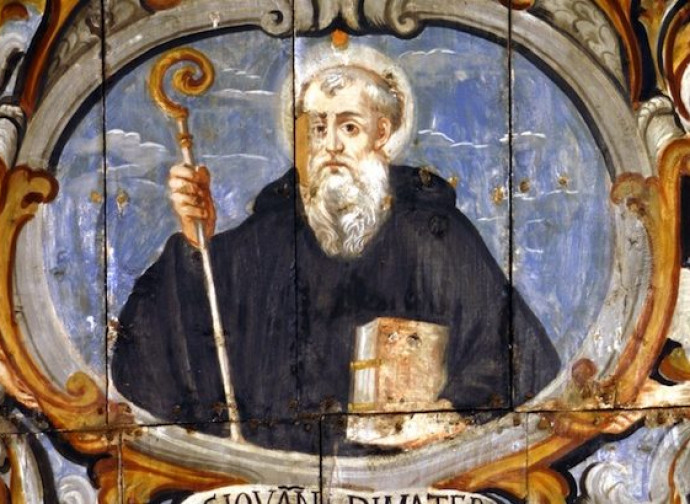Saint John of Matera
In northern Apulia, on Mount Gargano, less than ten kilometres from the Sanctuary of San Michele Arcangelo, stands the Abbey of Santa Maria di Pulsano, which was the seat of the Congregation of Pulsano Hermits, founded in the 12th century by St John of Matera (c. 1070-1139).

In northern Apulia, on Mount Gargano, less than ten kilometres from the Sanctuary of San Michele Arcangelo, stands the Abbey of Santa Maria di Pulsano, which was the seat of the Congregation of Pulsano Hermits, founded in the 12th century by St John of Matera (c. 1070-1139).
When he was still a boy, already wishing to consecrate his life entirely to God, John secretly left his family. He asked for hospitality in a Basilian monastery on the islet of San Pietro (opposite Taranto), tending sheep and practising strict asceticism. Due to some misunderstandings with the monks, he left the islet. He lived for a couple of years in Calabria and Sicily, leading a life of solitude and renunciation.
In his continuous wandering he returned to his birthplace, stopping for some time in Ginosa, on the border with Basilicata, where he founded a small monastic community. However, he was persecuted by a count, who had him imprisoned for greed. After being miraculously freed from his chains, John wandered for several months in the South until he reached Capua. Here, according to a Life written a few years after his death, a divine revelation prompted him to return to Apulia because it was in this region that God was calling him to lead back to the right path many souls, both men and women (multum populum utriusque sexus), who were in danger of being lost.
One of the various stages of his preaching journey was Bari, where he was active around 1127-1128. He then moved to the vicinity of Monte Sant'Angelo, the site of the famous cave of St Michael the Archangel, the subject of the revelations at the end of the 5th century to St Laurence Majoranus. It was there that John, inspired by two celestial figures (identifiable in the Virgin Mary and St Michael himself, chosen as protectors of the nascent community), founded his congregation around 1130. Attracted by his reputation for sanctity, the Pulsano monks - who followed the Benedictine Rule with a strong revival of manual labour - grew from the original number of six to fifty in a few months.
John died in Foggia on 20 June 1139. He was proclaimed a saint in 1177 by Alexander III. The rupestral Church of Purgatorio Vecchio [Old Purgatory] was constructed near the house where he was born in the historic centre of Matera.




